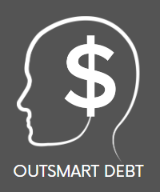Student loan forgiveness/debt relief has become a popular topic among federal student loan borrowers seeking to alleviate their financial burdens. Having the requisite information, you can make a judicious decision regarding your federal student loans and decide if loan forgiveness is the right course of action for you.

Student Loan Forgiveness
If you’re drowning in student loan debt, student loan forgiveness could be your saving grace.
The following programs can help reduce or eliminate your loans under certain circumstances, such as working in specific professions or meeting eligibility criteria.
Initial criteria for qualifying for student loan forgiveness include:
- Public Service Loan Forgiveness (PSLF): Designed for borrowers in eligible public service jobs who’ve made 120 qualifying monthly payments under a qualifying repayment plan.
- Teacher Loan Forgiveness: The Teacher Loan Forgiveness Program offers teachers in low-income schools up to $17,500 in loan forgiveness after five consecutive years of employment.
- Income-Driven Repayment (IDR) Plan Forgiveness: Borrowers enrolled in IDR plans like Income-Based Repayment (IBR), Pay As You Earn (PAYE), or Revised Pay As You Earn (REPAYE) may be eligible for forgiveness after making consistent payments over a specific period.
- Nurse Corps Loan Repayment Program: Registered nurses, nurse practitioners, and nurse faculty members working at accredited schools of nursing can receive up to 60% of their unpaid nursing education loans paid off through the National Health Service Corps Loan Repayment Program.
Some states also offer their own student loan forgiveness initiatives tailored to address local workforce needs, so it’s essential to research the specific requirements and application processes for each program before relying on this form of debt relief as part of your financial strategy.
Qualifying for Student Loan Forgiveness
Visit the official Federal Student Aid website to determine your eligibility and begin the application process.
Alternatives to Student Loan Forgiveness
- Income-Driven Repayment (IDR) Plans: Adjust your payments based on income and family size, making them more affordable. Learn more about IDR plans here.
- Refinancing: Save money in the long run and make monthly payments more manageable by searching for and taking out a new student loan with better terms.
- Federal Consolidation Loans: Simplify repayment and potentially lower monthly payments by combining multiple federal student loans into one single loan.
- Home Equity: If you’re a homeowner, perhaps a home equity line of credit (HELOC) or second mortgage can offer some payment relief.
- First Mortgage: An alternative to the HELOC would be to refinance your first mortgage, pulling out additional funds to pay off the student loan(s). If current market rates are better than your current interest rate, this can be advantageous.
- Money Max Account: A good way to wipe out ALL debt, not just student loans, is by using the computer program known as the Money Max Account (MMA). The MMA will analyze your income and outgo and systematically instruct you on how and when to make payments that minimize interest, thus paying off your debt much faster. See video below.
The downside of Student Loan Forgiveness:
High rejection rates due to strict eligibility criteria can leave you ineligible for forgiveness programs, so make sure you understand the requirements.
Unexpected tax obligations may result from forgiven loans being deemed taxable income by the IRS.
Conclusion
Student loan debt, like most all debt, can cause a heavy burden, adversely affecting your relationships and health. It’s amazing just how fast this type of debt can accumulate. Sure, you could follow the path presented by your creditors but you need to understand that they are in business to make a profit. It’s wise for you to seek alternatives and/or advice on how to minimize this burden so that you can enjoy a more productive life.
Do your research and make an informed decision based on your individual circumstances to find the best solution for your student loan debt.






